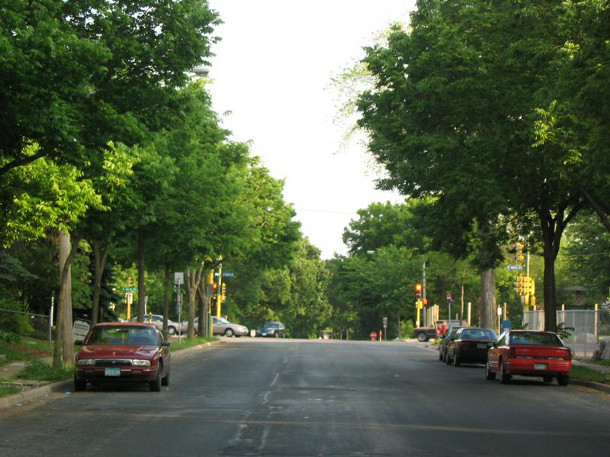Urban Design: The 10-20-30 Rule for Tree Diversity

We've been having an interesting discussion over on the Urban Forestry group on LinkedIn on the origins and suitability of the 10-20-30 rule for tree diversity in urban forests. For those that aren't familiar, the 10-20-30 rule is a guideline to reduce the risk of catastrophic tree loss due to pests. The rule suggests an urban tree population should include no more than 10% of any one species, 20% of any one genus, or 30% of any family.
The first published reference to the 10-20-30 rule (often referred to as just the 10% rule) was by late Dr. Frank Santamour, Research Geneticist at the US National Arboretum in his paper Trees for urban planting: Diversity, uniformity, and common sense, which was presented at the 1990 Metropolitan Tree Improvement Alliance (METRIA) conference. While Santamour is commonly credited with the 10% rule he notes in his paper, "I am not sure who first propounded the "10% rule", nor am I sure that anyone would want to take credit for it, but it is not a bad idea."
The other question on the LinkedIn discussion is whether the 10-20-30 rule is adequate to ensure genetic diversity in urban and community forests. My personal is opinion is that the rule is inadequate but far preferable than the status quo in most communities. If we consider the current issue with emerald ash borer (EAB) in North America, following the 10-20-30 rule means we would accept the loss of 1/5th of our urban canopy since both of the commonly planted ash species (Fraxinuspennsylvanica or F. americana) are highly susceptible to EAB. On the other hand, many community tree populations the US currently include 30% or more maples, so 10-20-30 would actually be an improvement.
A limitation to the 10-20-30 guideline that Santamour acknowledges is that the rule does not afford protection against insects with a broad host range such as gypsy moth or Asian long-horned beetle. However, while these pests can, and have, caused widespread damage they do not appear to threaten nearly total annihilation of an entire species or genus ala specialists such as chestnut blight, Dutch elm disease or EAB. Moreover, a wide diversity of species is still a better defense even against generalist pests, unless you happen to get lucky and plant a monoculture of the one tree they won't destroy.
One of the inherent challenges in the 10-20-30 rule is implementation. What is the tree population in question? Are we talking about a city? A neighborhood? A block? If there are 10 trees on a block do they all need to be different species? Some have proposed corollaries to 10-20-30 such as the "Look around rule." This guide states if you're getting ready to plant a tree; look around and if you already see that tree, plant something else. The problem with diversity on a very small scale is we can end up with the 'menagerie effect' – one of these, one of that, one of those – that often lacks aesthetic appeal. Ultimately this becomes a challenge for urban foresters and designers working together; how do we incorporate diversity guidelines within established design principles.
